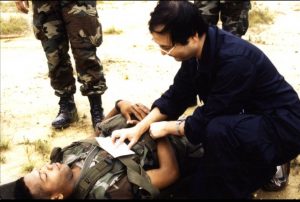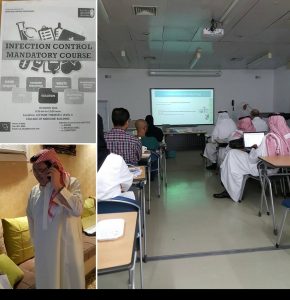Eric K. Noji nominated Director of Global Biodiversity Protection USA, Washington, D.C.
Dr Eric K. Noji, the legendary humanitarian visionary, medical doctor, noted author and iconic figure in the disaster relief community has been appointed director of the Global Biodiversity Protection Office in Washington, D.C. He will be responsible for assisting the President of GBP and other senior staff to develop an overall vision, goals and objectives to protect and sustain “the remarkable diversity of life on this planet”, especially as it relates to global health, sustainable economic development, and education. Eric will play a importent role in the success of the organisation, and it is a great privilege for GBP to serve as the instrument to extend his remarkable influence beyond all borders.
Iveta Seidlova
President of Global Biodiversity Protection
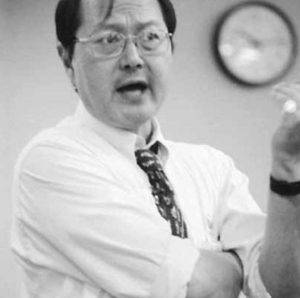
Dear friends, colleagues and visitors to our webpage,
Professor Eric Noji is a medical doctor who recently relocated to blazing deserts of Saudi Arabia from the dark windswept desolation of Antarctica where he studied the effects of extreme environments on human survivability. Noji has spent much of the past 30 years as a specialist in disaster aid and humanitarian assistance. So much has been said and written about the life and work of Eric Noji a story so mythic in its epic sweep and inspirational in its chronology of service and unrelenting self-sacrifice on behalf of those who suffer that it’s difficult to summarize his career without restating clichés already familiar to his legion of admirers. To start with the obvious he is among but a handful of disaster aid professionals whose innovative thinking and on-the-ground research established much of the scientific basis for current health responses to disasters and other humanitarian crises. working internationally, primarily in the poorest countries where he has served as Senior Technical Advisor, Team Leader, Program/ Project Manager, and consultant on numerous occasions to solve a wide variety of medical and public health problems for government agencies, NGOs, and international organizations such as USAID, WHO, UNICEF, and the World Bank.
Most of his assignments overseas were in response to large-scale public health emergencies such as natural disasters, epidemics, and situations where violent civil conflict has forced communities to leave their homes resulting in catastrophic humanitarian crises as we are currently witnessing in Syria and Yemen. Such disasters have taken Dr. Noji all over the world, including assignments in northern and sub-Saharan Africa, Latin America and the Caribbean, the Balkans, the Middle East from Lebanon to Afghanistan, China, Southeast Asia, the Pacific Rim, and for almost a year he provided medical care to communities in the vast Siberian tundra, most of which were located well above the Arctic circle. These regions had become almost completely isolated following the dissolution of the Soviet Union in the early 1990s. Almost always, his work took him to the most dangerous of places under the most difficult of circumstances, in the most austere environments and most inhospitable of conditions – from the blazing Arabian and Gobi deserts, navigating the ancient Silk Road as it wound its way through treacherous passes at 18,000 feet, to combating deadly communicable diseases in isolated African villages rarely visited since the days of Stanley and Livingstone to the perpetual isolation, darkness and and icy winds of Antarctica.
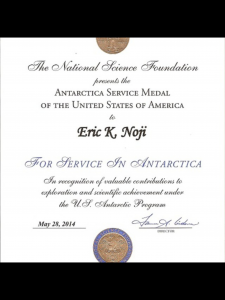

During these years, Noji developed several technological innovations to care for emergency affected populations that many now consider visionary. He subsequently summarized this work in a series of groundbreaking publications that revolutionized medical care in disaster situations and were influential in establishing public health standards for emergency health personnel. In 2005, Dr Noji was recognized for this pioneering work when he was elected to the US Institute of Medicine the highest honor that can be bestowed upon a physician in the US. On 14 July 2017 (Bastille Day) Professor Noji will be honored by the Government of France in Paris, where he will be inducted into the prestigious Ordre des Palmes Académiques at the rank of Chevalier (Knight). The Ordre des Palmes Académiques is an Order of Chivalry established by the Emperor Napoléon in 1808 to honour eminent professors and teachers in the world of science, culture and education.
Although Dr. Noji retired from Federal service in 2008 after more than 20 years as a medical officer at the Centers for Disease Control, he continues to provide his keen insights regarding global risk intelligence strategies, catastrophic risk management solutions, evolving humanitarian trends, newly emerging global health threats and enterprise crisis management strategy to senior government officials at the highest levels, relevant UN and international organizations, influential foundations and philanthropic groups, universities and respected think tanks, global corporations and financial institutions and nongovernmental organizations with the strongest track records for doing the best work. But what he is most proud of continues to be his tireless (and highly successful) efforts to raise awareness and money for people and groups whose work he passionately believes in, primarily those organizations working to strengthen the education and health of children with very special needs who are homeless, abused, starving, illiterate, left orphaned or destitute by natural disasters, or physically and emotionally traumatized by war.
A native of Hawaii, Eric Noji is a Phi Beta Kappa graduate of Stanford, and completed his medical studies, graduate work and residency training at the University of Rochester, the University of Chicago and the Johns Hopkins School of Hygiene and Public Health.
“I live and work on the edge – the views are breathtaking, the experiences deep and satisfying and the learning is limitless” (from the Foreword to his three volume set of memoirs “Confessions of a Wanderer”)
Ʃɾìϲ Ƙ. Ɲסּϳі
 Eric K. Noji, M.D. at Gombe Stream Research Center, Gombe Stream Game Reserve in Tanzania My name is Eric Noji. Although a medical doctor by training, I have also spent a great part of my life in fields where I studied the wonderful diversity of life on this planet as a marine and wildlife biologist, as an ornithologist studying bird migration in Europe and North America, and as a scientist studying chimpanzee behavior in Tanzania’s Gombe Stream Research Center and assisting on pioneering gorilla safety monitoring programs and long-term behavioral research studies in Rwanda’s Volcanoes National Park. For over 15 years, I volunteered on numerous occasions to work in Africa as Ranger, game warden and consultant to national Park police responsible for rescuing chimpanzees and mountain gorillas and protecting them against poachers who were illegally hunting them in the national parks.
Eric K. Noji, M.D. at Gombe Stream Research Center, Gombe Stream Game Reserve in Tanzania My name is Eric Noji. Although a medical doctor by training, I have also spent a great part of my life in fields where I studied the wonderful diversity of life on this planet as a marine and wildlife biologist, as an ornithologist studying bird migration in Europe and North America, and as a scientist studying chimpanzee behavior in Tanzania’s Gombe Stream Research Center and assisting on pioneering gorilla safety monitoring programs and long-term behavioral research studies in Rwanda’s Volcanoes National Park. For over 15 years, I volunteered on numerous occasions to work in Africa as Ranger, game warden and consultant to national Park police responsible for rescuing chimpanzees and mountain gorillas and protecting them against poachers who were illegally hunting them in the national parks.
This was dangerous work, our adversaries were quite violent but I came from a law enforcement background, having worked full-time as a park policeman and ranger naturalist in the US National Park Service between my university studies in medical school. Protecting and sustaining the remarkable diversity of life on this planet is certainly the very foundation of life, health, sustainable economic development, education, liberty, and pursuit of happiness. And even more fundamentally, biodiversity shapes all of us as organisms on this small rock in the middle of the solar system. I always tell people, that I am the very personification of “micro” biodiversity, being born in a place like Hawaii which is a melting pot of every ethnic group found in Wikipedia.
For example, I am 27.5% native Hawaiian, 9% Portuguese , 7.25% Dutch , 39% Japanese, 8.25% Greek, 7.25% Scottish, and 1.5% unidentifiable (I assume human genetic material). Hawaii, an isolated island chain that together with the Galapegos Islands are the places where the scientific foundation of evolution were first elucidated by Darwin, the fundamental nature of biodiversity, and unfortunately, are some of our earliest examples of the fragility of nature to external threats that may undo millions of years of development in a matter of months.
Eric K. Noji, M.D. at Gombe Stream Research Center, Gombe Stream Game Reserve in Tanzania
I know my impressive ethnic mixture and growing up in a place where theories explaining how this planet became populated by such an amazing variety of life, explains much of my personality, my beliefs, my philosophy of life, the type of work I do, and last but not least, why I am so passionate about what this organization does to both raise awareness and to take direct action in protecting global biodiversity. Biodiversity systems are areas throughout the world where the major life forms that sustain our global ‘biology’ are found. It is in these areas where the large majority of the crucial 1,500 vascular plant species, and at least 70% of original vertebrates, reside and define the foundation for sustaining the ‘public health’ of the planet. The resources focused in these unique biodiversity areas of the world must be recognized as “global resources,” not a commodity that can be owned by any one nation-state. The nation-states in which they reside are their protectorates and have a duty to ensure their lasting viability. I hope the information contained in this website conveys a small sense of what awaits to be discovered and inspires you to join us in unlocking that potential.
Best wishes,
Eric K.Noji
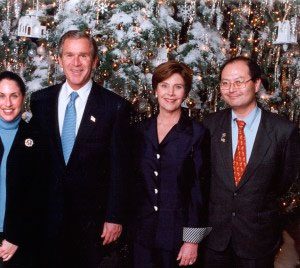

On September 11, 2001, the World Trade Center and Pentagon were attacked and three weeks later, a national crisis was provoked by the intentional release of weaponized anthrax in the U.S. postal system. Dr. Noji was assigned by Secretary of Health & Human Services, Tommy Thompson to the newly established White House Office of Homeland Security located in the Executive Office of the President as an expert in the treatment of biological, chemical, nuclear and blast terrorism. Shown here briefing President George W Bush at the White House “war room”.

